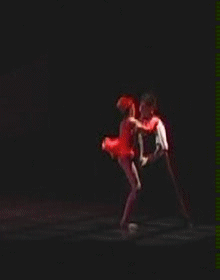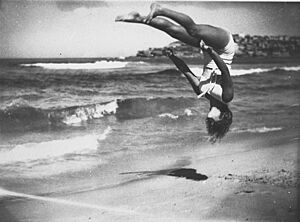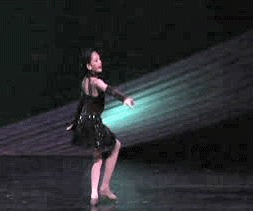Flip (acrobatic) facts for kids
An acrobatic flip is an exciting move where a person jumps into the air. While airborne, they spin their body around one or more times. You can see acrobatic flips in many activities. These include acro dance, free running, gymnastics, and cheerleading. Athletes also use them in high jumping, tricking (martial arts), and even during goal celebrations in sports! This is different from freestyle BMX flips, where a rider spins with their bike.
You can start an acrobatic flip from a standing position. But often, people do a flip right after another spinning move. For example, after a roundoff or handspring. This helps them get more spin and height. Usually, your hands do not touch the ground during a flip. The goal is to land back on your feet standing tall. However, touching the ground doesn't mean it's not a flip!
Contents
How Flips are Classified
There are many kinds of flips, used in different activities. In gymnastics, flips follow very strict rules and forms. But in activities like free running and tricking, there are tons of flip variations! Many of these come from basic gymnastics flips. So, you'll often hear gymnastics terms used for flips in other sports too. Flips are usually grouped by how your body spins. For example, in a front flip, your body spins forward (face first). In a back flip, you spin backward.
Gymnastics Flips
Gymnasts perform flips in both men's and women's events. You can see them on the balance beam, vault, floor, and uneven bars. They are also done on the pommel horse, rings, parallel bars, and high bar. For all gymnastics flips, your hips must go higher than your head. There are four main body shapes used in gymnastics flips:
Different Body Shapes in Gymnastics Flips
- Aerial – In an aerial flip, your knees stay straight. Your legs might be in a forward or side split. This creates a front aerial or side aerial.
- Tuck – For a tuck, you bring your legs together. Your knees bend fully and pull towards your chest. Your hands might hold your knees or stay close to your body. By tucking tightly, you spin faster. This helps you finish the flip quickly. If you start a tuck from standing still, it's called a 'standing' tuck. Sometimes, a tuck includes a full 360-degree spin, called a back tuck full.
- Layout – In a layout, your body is completely straight and stretched out. Your legs are together, and your hips and knees are straight. Your arms are held at your sides. A layout needs more height and spin than a back tuck. This gives you enough time to complete the rotation before landing. You start the flip by moving your arms from your ears down to your hips. This helps you begin the flip and control your landing. A layout can also include extra spins around your body's long axis. This is called a twist. Twists are named by how many times you spin. For example, a 180-degree spin is a half twist. A 360-degree spin is a full twist. You can even do double full or triple full twists!
- Pike – For a pike, you bend at your hips. Your knees stay straight, and your legs are together.
Many gymnastics flips get their names from how you spin and what body shape you use. For instance, a front flip done in a tuck position is a front tuck. If you start it from a standing position, it's a standing front tuck.
Other Cool Flip Variations


Common Flip Changes
You can add these changes to many different flips:
- Gainer – This is a back flip where you move forward from where you started.
- Loser – This is a front flip where you move backward from where you started.
- Switch – This flip starts and lands on the same leg.
Special Tuck Flips
- Pitch tuck – This is a back tuck done with a partner's help. One person makes a "saddle" with their hands. The second person steps on it. Then, the first person pushes the saddle up. This helps the second person launch into a back tuck.
- Cowboy tuck – This tuck has your knees and feet spread apart.
- Arabian – This flip starts like a backward tuck. But after you jump, you do a half twist and finish like a front tuck.
Layout Flip Styles
- X-in or X-out – In these flips, your legs and arms spread out. They form an 'X' shape in the air.
- Layout or Straight – Here, your legs stay together and mostly straight. You whip them over your head as you flip.
Tricking and B-Boying Flips
There are countless flip styles in activities like tricking and B-Boying. Many of these have their own special names.
See Also


